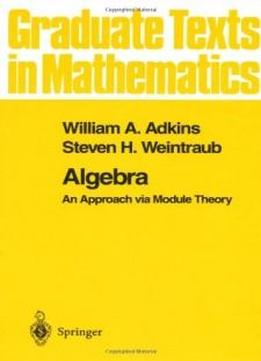
Algebra: An Approach Via Module Theory (graduate Texts In Mathematics)
by Steven H. Weintraub /
1999 / English / PDF
10.1 MB Download
This book is designed as a text for a first-year graduate algebra
course. The choice of topics is guided by the underlying theme of
modules as a basic unifying concept in mathematics. Beginning with
standard topics in groups and ring theory, the authors then develop
basic module theory, culminating in the fundamental structure
theorem for finitely generated modules over a principal ideal
domain. They then treat canonical form theory in linear algebra as
an application of this fundamental theorem. Module theory is also
used in investigating bilinear, sesquilinear, and quadratic forms.
The authors develop some multilinear algebra (Hom and tensor
product) and the theory of semisimple rings and modules and apply
these results in the final chapter to study group represetations by
viewing a representation of a group G over a field F as an
F(G)-module. The book emphasizes proofs with a maximum of insight
and a minimum of computation in order to promote understanding.
However, extensive material on computation (for example,
computation of canonical forms) is provided.
This book is designed as a text for a first-year graduate algebra
course. The choice of topics is guided by the underlying theme of
modules as a basic unifying concept in mathematics. Beginning with
standard topics in groups and ring theory, the authors then develop
basic module theory, culminating in the fundamental structure
theorem for finitely generated modules over a principal ideal
domain. They then treat canonical form theory in linear algebra as
an application of this fundamental theorem. Module theory is also
used in investigating bilinear, sesquilinear, and quadratic forms.
The authors develop some multilinear algebra (Hom and tensor
product) and the theory of semisimple rings and modules and apply
these results in the final chapter to study group represetations by
viewing a representation of a group G over a field F as an
F(G)-module. The book emphasizes proofs with a maximum of insight
and a minimum of computation in order to promote understanding.
However, extensive material on computation (for example,
computation of canonical forms) is provided.











